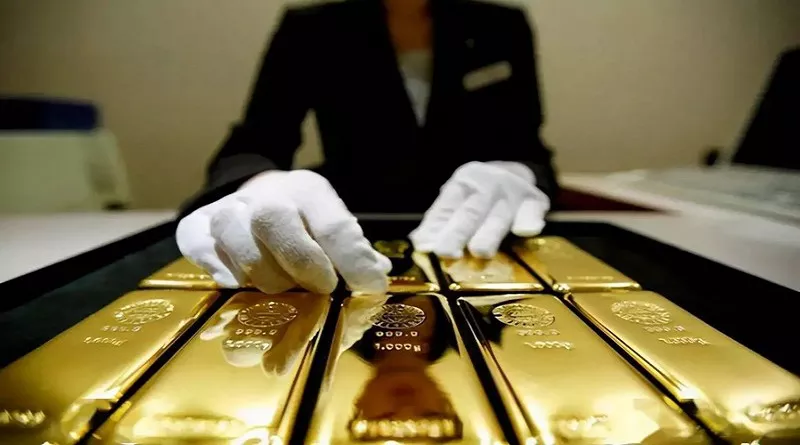Gold futures contracts play a pivotal role in the intricate tapestry of financial markets, offering investors a unique avenue to gain exposure to the precious metal. In this article, we will delve into the intricacies of what a gold futures contract entails, examining its definition, characteristics, and the underlying mechanisms that drive its prominence in the global commodities market.
I. Unveiling the Basics: What is a Gold Futures Contract?
A gold futures contract is a standardized agreement between two parties to buy or sell a specific amount of gold at a predetermined price on a future date. Traded on commodity exchanges, these contracts serve as a cornerstone for price discovery, risk management, and investment strategies related to gold.
II. The Structure of a Gold Futures Contract
Contract Specifications:
Quantity: Each gold futures contract specifies the amount of gold it represents, typically measured in troy ounces. Common contract sizes include 100 troy ounces.
Delivery Date: The contract outlines the future date when the gold is expected to be delivered. Different contracts may have varying delivery months.
Price Determination:
Agreed-Upon Price: The futures contract establishes a fixed price at which the gold will be bought or sold on the delivery date. This price is agreed upon by the two parties entering into the contract.
Contract Expiry:
Expiration Date: Gold futures contracts have a specified expiration date, after which they can no longer be traded. Traders can choose to settle the contract before the expiration date or allow it to reach maturity.
III. Participants in the Gold Futures Market
Hedgers:
Risk Mitigation: Entities involved in gold-related industries, such as mining companies or jewelry manufacturers, use futures contracts to hedge against price volatility. By locking in a future price, they can protect themselves from adverse market movements.
Speculators:
Profit Motive: Speculators enter the gold futures market with the primary goal of profiting from price fluctuations. They assume market risk in the hope of capitalizing on favorable price movements.
Arbitrageurs:
Exploiting Price Differences: Arbitrageurs aim to profit from price differentials between the futures market and the spot market. They buy low in one market and sell high in another, exploiting inefficiencies.
IV. The Role of Commodity Exchanges
Chicago Mercantile Exchange (CME):
Home to Gold Futures: The CME, particularly its COMEX division, is a leading platform for trading gold futures contracts. It provides a centralized marketplace where buyers and sellers can efficiently engage in gold futures transactions.
London Metal Exchange (LME):
Global Influence: While primarily known for base metals, the LME also facilitates gold futures trading. Its contracts may differ from those on the CME, attracting a diverse set of market participants.
V. Margin Requirements and Leverage in Gold Futures Trading
Margin Requirements:
Initial Margin: Traders are required to deposit an initial margin, a fraction of the contract value, to enter into a gold futures position. This ensures that they have the financial capacity to fulfill their obligations.
Maintenance Margin: Ongoing price fluctuations may trigger margin calls, requiring traders to replenish their margin accounts to maintain their positions.
Leverage:
Amplifying Returns and Risks: Futures trading allows investors to control a larger contract size with a relatively small initial investment. While leverage can amplify returns, it also increases the potential for losses.
VI. Understanding the Mark-to-Market Process
Daily Settlements:
Marking to Market: Each trading day, the futures exchange settles the gains or losses of traders’ positions based on the day’s closing prices. This daily settlement process helps manage the credit risk associated with futures trading.
Profit and Loss Realization:
Cash Flow Impact: Profits or losses are realized daily, impacting traders’ cash flows. This process ensures that traders are financially sound and able to meet their obligations throughout the life of the contract.
VII. Factors Influencing Gold Futures Prices
Supply and Demand Dynamics:
Global Production: Changes in gold production levels, influenced by factors such as mining output and exploration activities, impact the overall supply available in the market.
Industrial and Jewelry Demand: Beyond investment demand, industrial applications and jewelry consumption contribute to the demand side of the equation.
Macroeconomic Indicators:
Inflation Rates and Interest Rates: Gold is often considered a hedge against inflation, and its prices may be influenced by changes in inflation rates. Additionally, fluctuations in interest rates can impact the opportunity cost of holding gold.
Geopolitical Events:
Safe-Haven Appeal: Gold tends to gain appeal during periods of geopolitical uncertainty. Political instability, trade tensions, and global crises can lead to increased demand for gold and subsequent price movements in the futures market.
Conclusion: Navigating the Complexities of Gold Futures Contracts
In conclusion, a gold futures contract is not merely a financial instrument but a dynamic tool that facilitates risk management, speculation, and investment strategies related to the precious metal. The structured nature of these contracts, with predetermined quantities, prices, and delivery dates, provides a framework for market participants to engage in gold-related transactions.
Understanding what a gold futures contract entails involves grasping its role in risk mitigation for hedgers, profit-seeking for speculators, and the intricate interplay of market forces. As investors navigate the complexities of the financial world, gold futures contracts stand as a resilient and integral component, reflecting the enduring allure of gold in the ever-evolving landscape of global finance.

